Took off in Spitfire Mark V (Sqn code: K Fighter Command) as part of Operation Circus 81.
Failed to return. Later found to have been shot down near St Omer France in aerial combat.


Birth Date: unkown date
Born:
Parents:
Spouse:
Home: Toronto, Ontario
Enlistment:
Enlistment Date: unkown date
Service
RCAF
Unit
403 Sqn- Squadron
Stalk and Strike
Base
RAF Hornchurch, Essex
Rank
Flight Lieutenant
Position
Pilot
Service Numbers
J/3744
PoW: 39323
Took off in Spitfire Mark V (Sqn code: K Fighter Command) as part of Operation Circus 81.
Failed to return. Later found to have been shot down near St Omer France in aerial combat.
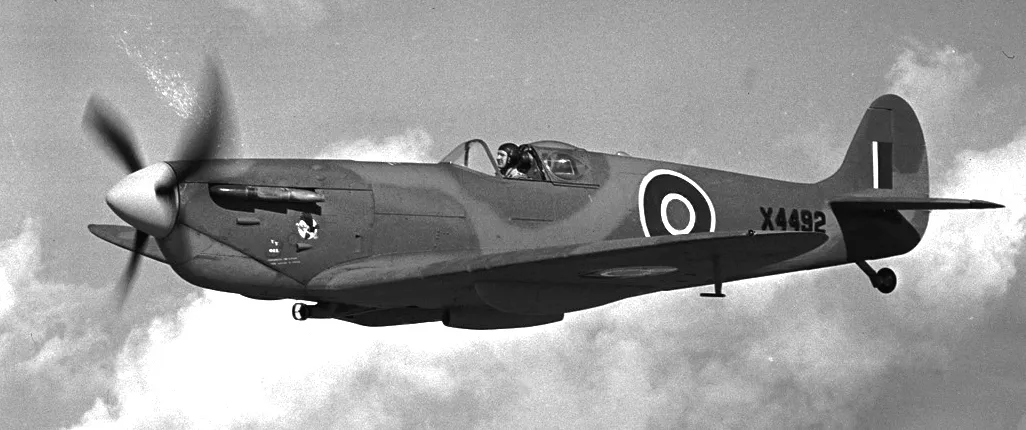
The Supermarine Spitfire is a British single-seat fighter aircraft that was used by the Royal Air Force and other Allied countries before, during, and after World War II. Many variants of the Spitfire were built, using several wing configurations, and it was produced in greater numbers than any other British aircraft. It was also the only British fighter produced continuously throughout the war. The Spitfire continues to be popular among enthusiasts; around 70 remain airworthy, and many more are static exhibits in aviation museums throughout the world.
The Spitfire was designed as a short-range, high-performance interceptor aircraft by R. J. Mitchell, chief designer at Supermarine Aviation Works, which operated as a subsidiary of Vickers-Armstrong from 1928. Mitchell pushed the Spitfire's distinctive elliptical wing with cutting-edge sunken rivets (designed by Beverley Shenstone) to have the thinnest possible cross-section, helping give the aircraft a higher top speed than several contemporary fighters, including the Hawker Hurricane.
The Spitfire had detachable wing tips which were secured by two mounting points at the end of each main wing assembly. When the Spitfire took on a role as a high-altitude fighter (Marks VI and VII and some early Mk VIIIs), the standard wing tips were replaced by extended, "pointed" tips which increased the wingspan from 36 ft 10 in (11.23 m) to 40 ft 2 in (12.24 m). The other wing-tip variation, used by several Spitfire variants, was the "clipped" wing; the standard wing tips were replaced by wooden fairings which reduced the span by 3 ft 6 in (1.07 m). The wing tips used spruce formers for most of the internal structure with a light alloy skin attached using brass screws.
Due to a shortage of Brownings, which had been selected as the new standard rifle calibre machine gun for the RAF in 1934, early Spitfires were fitted with only four guns, with the other four fitted later. Early tests showed that, while the guns worked perfectly on the ground and at low altitudes, they tended to freeze at high altitude, especially the outer wing guns, because the RAF's Brownings had been modified to fire from an open bolt. While this prevented overheating of the cordite used in British ammunition, it allowed cold air to flow through the barrel unhindered. Supermarine did not fix the problem until October 1938, when they added hot air ducts from the rear of the wing-mounted radiators to the guns, and bulkheads around the gunbays to trap the hot air in the wing. Red fabric patches were doped over the gun ports to protect the guns from cold, dirt, and moisture until they were fired.
The first Rolls-Royce Griffon-engined Mk XII flew in August 1942, and first flew operationally with 41 Squadron in April 1943. This mark could nudge 400 mph (640 km/h) in level flight and climb to an altitude of 33,000 ft (10,000 m) in under nine minutes. As American fighters took over the long-range escorting of USAAF daylight bombing raids, the Griffon-engined Spitfires progressively took up the tactical air superiority role, and played a major role in intercepting V-1 flying bombs, while the Merlin-engined variants (mainly the Mk IX and the Packard-engined Mk XVI) were adapted to the fighter-bomber role. Although the later Griffon-engined marks lost some of the favourable handling characteristics of their Merlin-powered predecessors, they could still outmanoeuvre their main German foes and other, later American and British-designed fighters.Wikipedia
![]() Wikipedia Supermarine Spitfire
Wikipedia Supermarine Spitfire

The squadron was formed at Baginton, Warwickshire, UK  in March 1941 and was the first RCAF fighter squadron to be formed overseas in WWII. It was originally intended to be an Army Co-operation squadron, but was rapidly transformed to a fighter squadron as a unit of No 9 Group of RAF Fighter Command. It was originally issued with Curtiss Tomahawk fighters, but these were rapidly replaced by Supermarine Spitfire Mk I, which were in turn replaced by Spitfire Mk V before the squadron became operational with No 11 Group of Fighter Command at Hornchurch, Essex in August 1941.
in March 1941 and was the first RCAF fighter squadron to be formed overseas in WWII. It was originally intended to be an Army Co-operation squadron, but was rapidly transformed to a fighter squadron as a unit of No 9 Group of RAF Fighter Command. It was originally issued with Curtiss Tomahawk fighters, but these were rapidly replaced by Supermarine Spitfire Mk I, which were in turn replaced by Spitfire Mk V before the squadron became operational with No 11 Group of Fighter Command at Hornchurch, Essex in August 1941.
Between then and June 1942 the squadron operated from Hornchurch, Debden, North Weald and Southend (all in Essex). Its operations consisted mainly of fighter sweeps over the English Channel and France, and in CIRCUS operations. In October the squadron was transferred to East Coast convoy patrols from Martlesham Heath, Suffolk, returning to North Weald from December 1941 to May 1942. The squadron then moved to Catterick, Yorks from June 1942 to January 1943 as part of No 13 Group of Fighter Command, although it flew south to Manston, Kent, to take part in the Dieppe invasion debacle on August 19th. It flew 4 operations on that day, shooting down 3 enemy aircraft and damaging 3 more, for the loss of 3 Spitfires. In January 1943 the squadron returned from Catterick to Kenley, Surrey, to join the Canadian Kenley Wing of No 11 Group, which in July became part of the 2nd Tactical Air Force (TAF). The squadron was part of No 127 (RCAF) Wing of No 83 Composite Group. By now the squadron was equipped with Spitfire Mk IX fighters. The operations consisted of fighter sweeps and RHUBARB and RAMROD raids. To prepare the squadron for future operations in Europe, the squadron spent some months at temporary, tented airstrips at Lashenden and Headcorn in Kent, before returning to Kenley in mid-October. Operations continued as before from Kenley until April 1944, when the squadron moved to Tangmere, Sussex, and began to undertake dive-bombing operations. It claimed that it was the first Spitfire Group to commence the bombing of Europe. On D-Day it switched to shipping patrols over the invasion fleets. The squadron moved to France on June 15, 1944 where it provided armed reconnaissance cover for the armies. This activity continued until the New Year, with the squadron moving bases constantly to keep in touch with the advances of the armies. The squadron re-equipped with Spitfire Mk XVI in December 1944, and in 1945 reverted to its dive-bombing function until the end of the war in Europe. The squadron disbanded at Fassberg, Germany  on 10 July 1945.
on 10 July 1945.
In the course of hostilities, the squadron flew about 13,000 sorties and shot down 123 enemy aircraft, 10 probably destroyed and 72 damaged. 70 tons of bombs were dropped, and the squadron was credited with 17 rail cuts and many locomotives, freight cars and automobiles destroyed. The cost was 85 aircraft and 75 pilots of whom 4 were killed and 40 posted missing, presumed dead. The squadron personnel included 4 aces (Flight Lieutenant H.D. MacDonald DFC & Bar, Flight Lieutenant J.D. Lindsay DFC, Squadron Leader L.S. Ford DFC & Bar, Squadron Leader H.C. Godefroy DFC & Bar), and won 16 DFCs, 4 Bars to DFC, 1 MM (for an escape from a PoW camp) and 3 MiDs. Battle Honours were: Defence of Britain 1941-1944, English Channel and North Sea 1942, Fortress Europe 1941-1944, Dieppe, France and Germany 1944-1945: Normandy 1944, Rhine. Kostenuk and Griffin

MAP 1: 403 Squadron Movements in Britain 1941-45, (right-click on image to display enlarged in new tab)
|
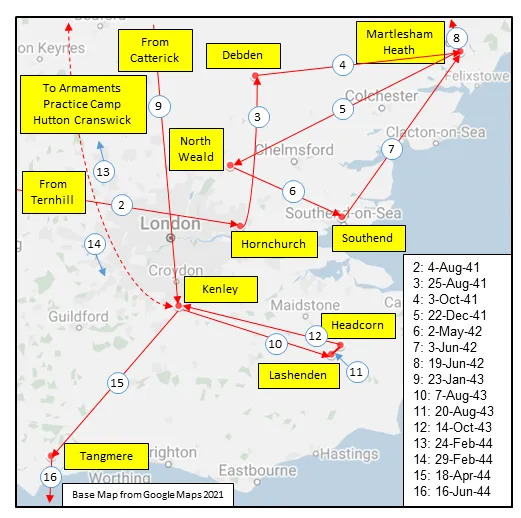
MAP 2: Insert from Map 1
|
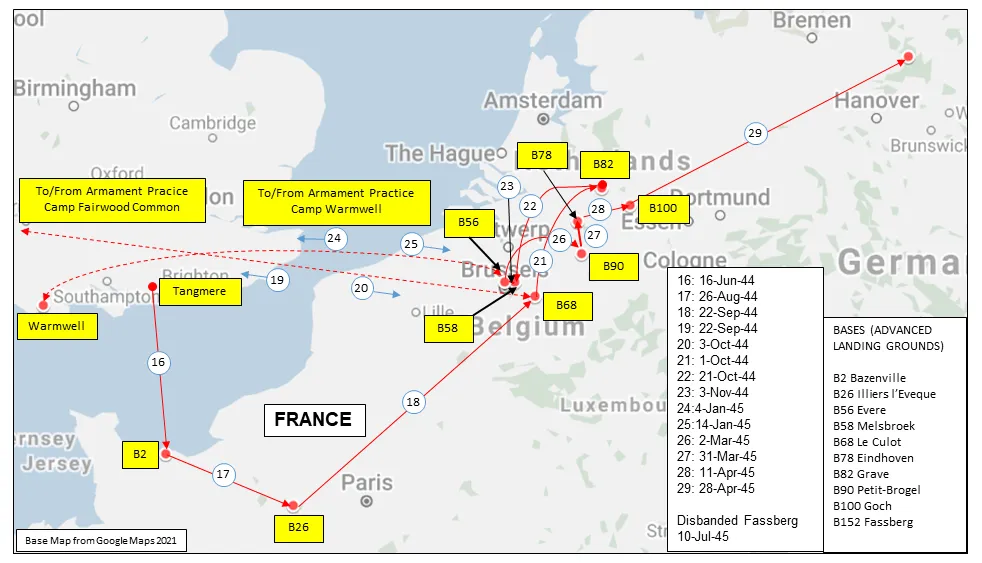
MAP 3: 403 Squadron Movements in Europe 1944-45
|
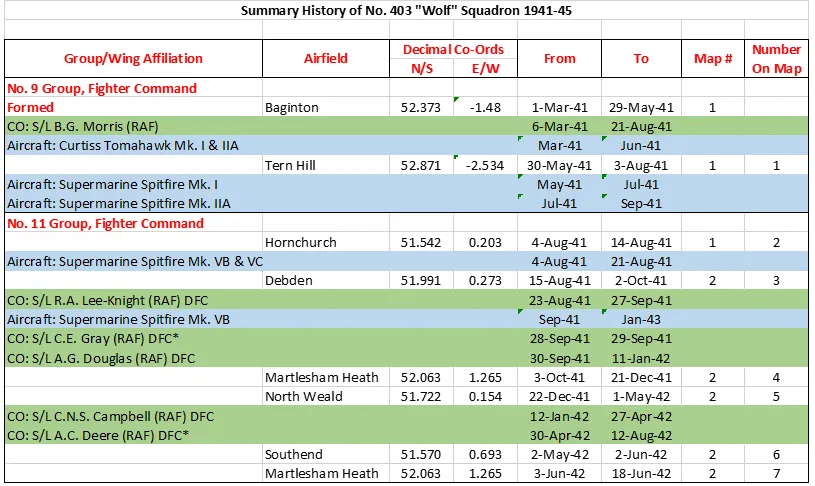

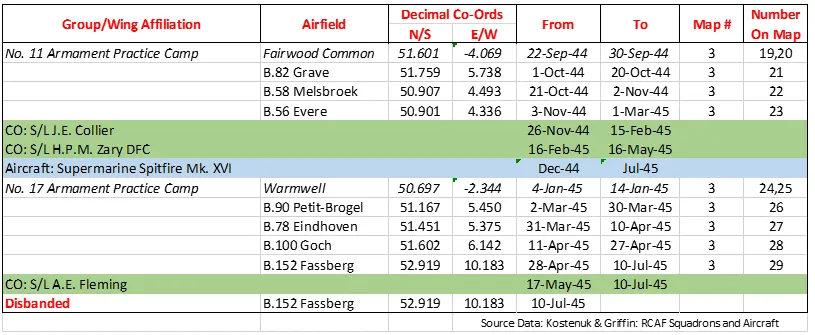
The squadron re-formed as No. 403 (FB) Sqn (Aux), at Calgary, Alberta  on 15 October 1948, flying North American Harvard II aircraft. It was re-titled No. 403 “City of Calgary†(FB) Sqn (Aux) on 3 September 1952. It was re-designated No. 403 “City of Calgary†(F) Sqn (Aux) on 16 November 1953, by which time it was flying North American Mustang IV (P-51-D) aircraft. Again it was re-designated No. 403 “City of Calgary†(T) Sqn (Aux) on 25 January 1957, when it was re-designated a transport unit and re-equipped with Beechcraft Expeditor aircraft. It was again re-designated No. 403 “City of Calgary†Sqn (Aux) on 1 April 1958 in a light transport and emergency rescue role and received de Havilland Otter aircraft. It was disbanded at Calgary on 1 Apr 64.
on 15 October 1948, flying North American Harvard II aircraft. It was re-titled No. 403 “City of Calgary†(FB) Sqn (Aux) on 3 September 1952. It was re-designated No. 403 “City of Calgary†(F) Sqn (Aux) on 16 November 1953, by which time it was flying North American Mustang IV (P-51-D) aircraft. Again it was re-designated No. 403 “City of Calgary†(T) Sqn (Aux) on 25 January 1957, when it was re-designated a transport unit and re-equipped with Beechcraft Expeditor aircraft. It was again re-designated No. 403 “City of Calgary†Sqn (Aux) on 1 April 1958 in a light transport and emergency rescue role and received de Havilland Otter aircraft. It was disbanded at Calgary on 1 Apr 64.
In January 1968, the squadron was re-activated as 403 (Helicopter) Operational Training Squadron (Hel) OTS at Canadian Forces Base (CFB) Petawawa and was equipped with 10 CUH-1H helicopters. It was formed specifically to support the Land Forces. In July 1972, the squadron was given the role of training of aircrew and technical personnel for the Tactical Helicopter and Rescue Squadrons. To carry out its new role, the squadron joined 422 Squadron at CFB Gagetown, New Brunswick  and was equipped with 11 CH-135 Twin Huey and 10 CH-136 Kiowa helicopters. In August 1980, the squadron gained aircrew and support personnel from the disbandment of 422 Squadron. In August 1980, the Air Ground Operations School was formed to provide advance training for future Flight Commanders and Operations Officers. Renamed Aviation Tactics Flight in June 1995, the Flight continues to provide this training, and aviation support to the Combat Training Centre, 1 Wing and the Air Force.
and was equipped with 11 CH-135 Twin Huey and 10 CH-136 Kiowa helicopters. In August 1980, the squadron gained aircrew and support personnel from the disbandment of 422 Squadron. In August 1980, the Air Ground Operations School was formed to provide advance training for future Flight Commanders and Operations Officers. Renamed Aviation Tactics Flight in June 1995, the Flight continues to provide this training, and aviation support to the Combat Training Centre, 1 Wing and the Air Force.
In July 1990, the squadron renewed its post-war relationship with the Air Reserves. At that time the Combat Training Centre (CTC) Gagetown Detachment of the CFB Chatham Air Reserve Augmentation Flight (ARAF) took up residence in the squadron. The flight became an integral part of the Squadron in 1996.Renamed the Air Reserve Section in 1998, the squadron's reservists are incorporated into and provide support to all flights. In August 1992 the Land Aviation Test and Evaluation Flight (LATEF) was formed to conduct, on behalf of 10 Tactical Air Group (10 TAG), operational and tactical testing of land aviation helicopter systems and support equipment, and to propose operational and tactical doctrine where applicable. It quickly evolved into a valuable asset and has been integrally involved in the testing and improvement of CH-146 Griffon systems.
The Kiowa and Twin Huey were phased out of the squadron by the end of 1994 and early 1995 respectively and were replaced by the CH-146 Griffon in March 1995. The squadron became the first operational CH-146 unit in 10 TAG in October 1995.